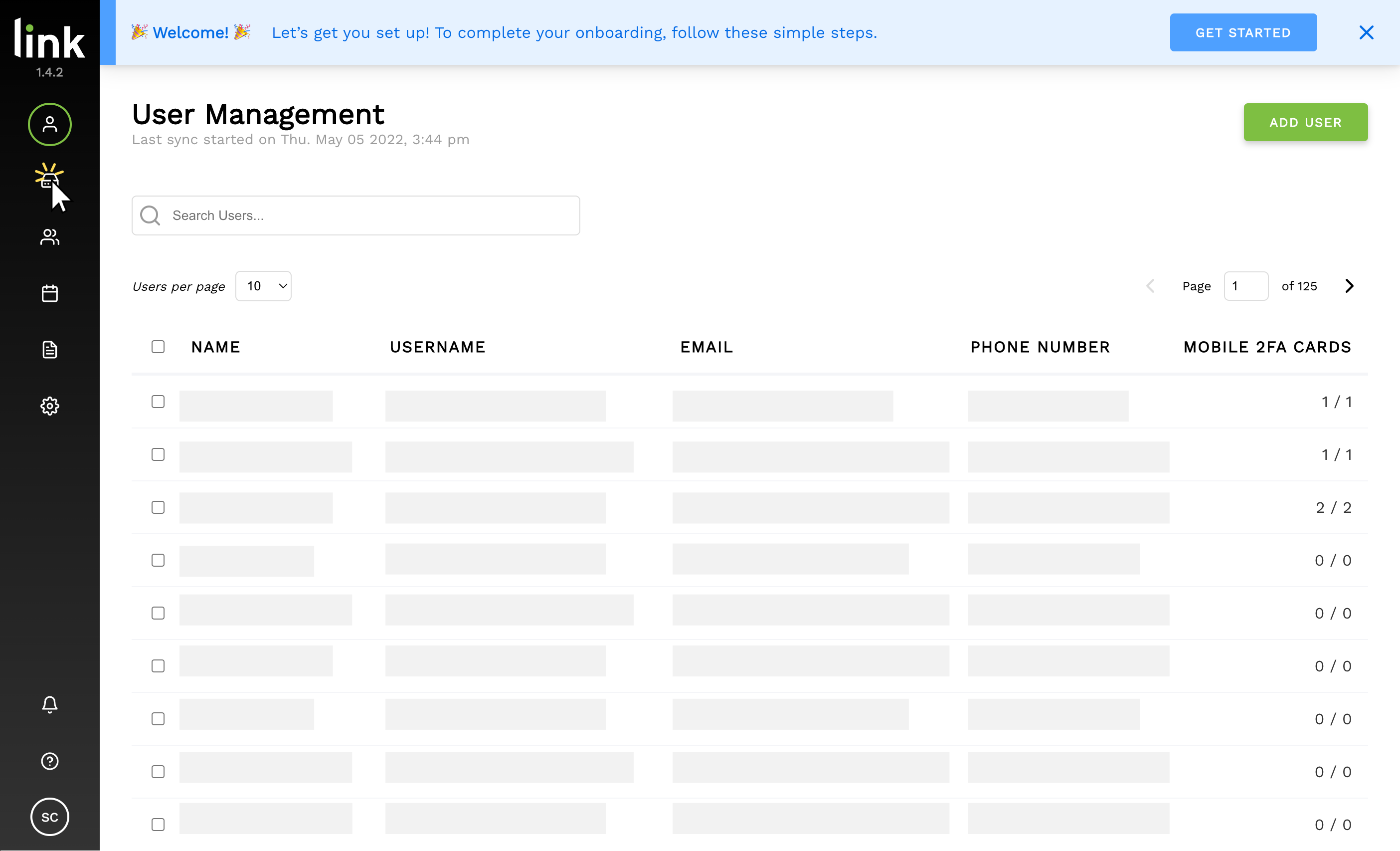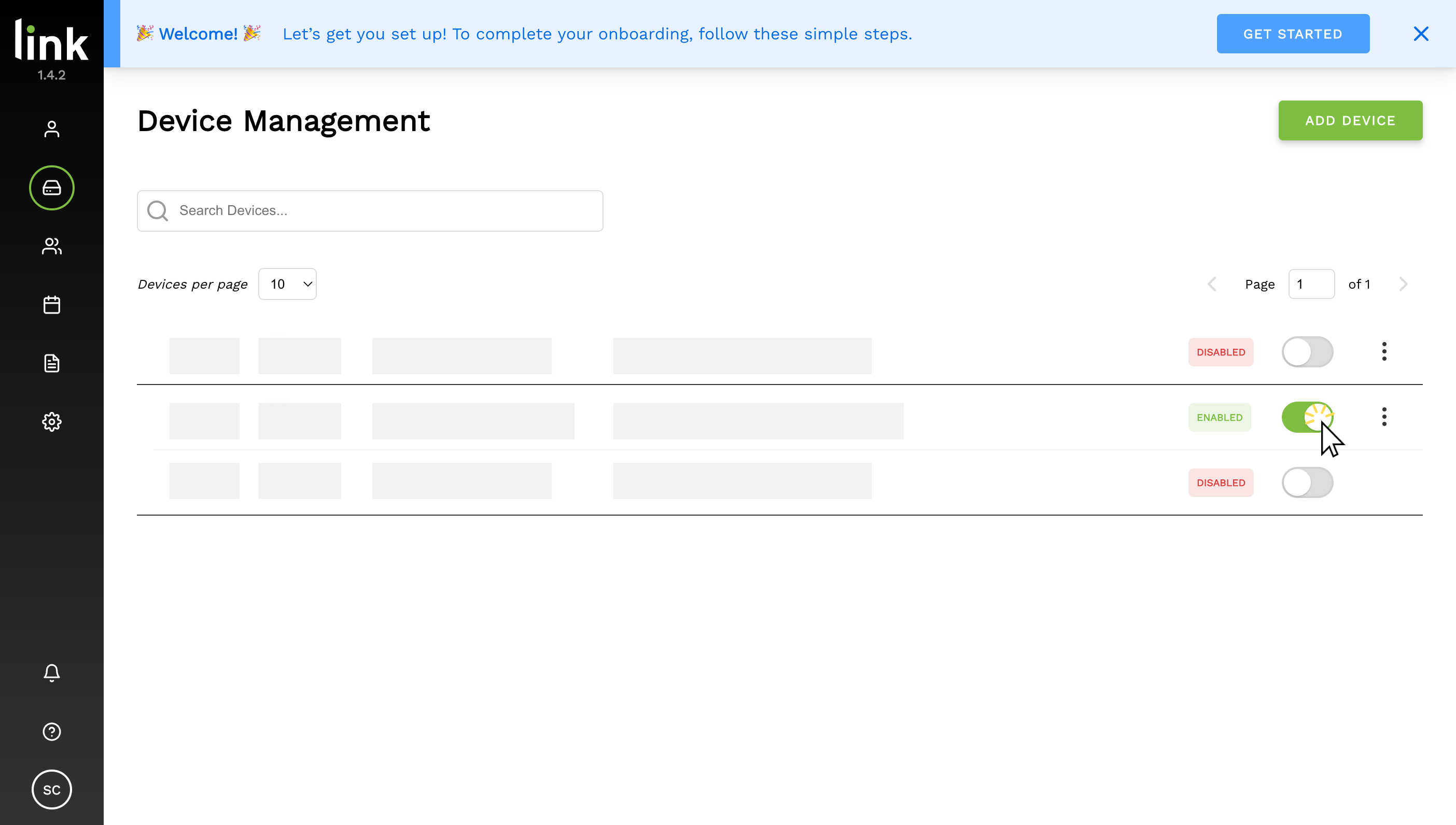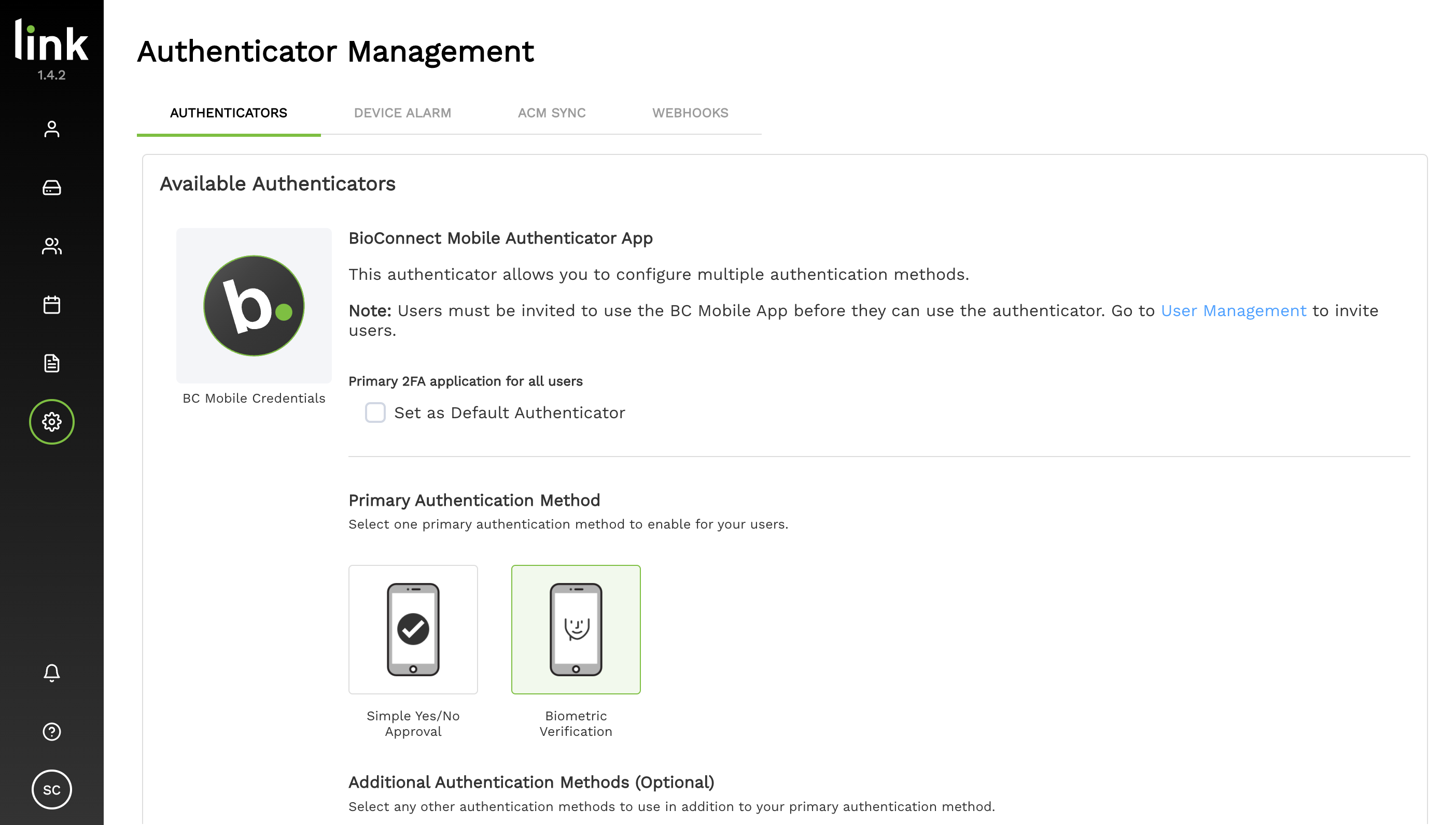
Cabinet Installation Guide
Getting Started
In most environments, installing a Link device takes 30 minutes or less. Below are step-by-step instructions to activate, install and wire your device.
Before You Open the Box
1. Ensure that your locks are properly installed.
The BioConnect Link Cabinet solution can support up to two KS200 Locks for a single cabinet.
Need help installing KS200 Locks?

2. Select a Two Factor Authenticator.
The Link Solution works with many 2FA (Two-Factor Authentication) services such as DUO, PING, etc. If you do not currently use a Two-Factor Authenticator, you can use the provided BioConnect Mobile Authenticator.

3. Ensure your Link account has been created.
Upon purchasing a device, an email was sent to you that included a username, password and subdomain that you will need to gain access to the Console.
Search ‘BioConnect Link’ in your inbox.
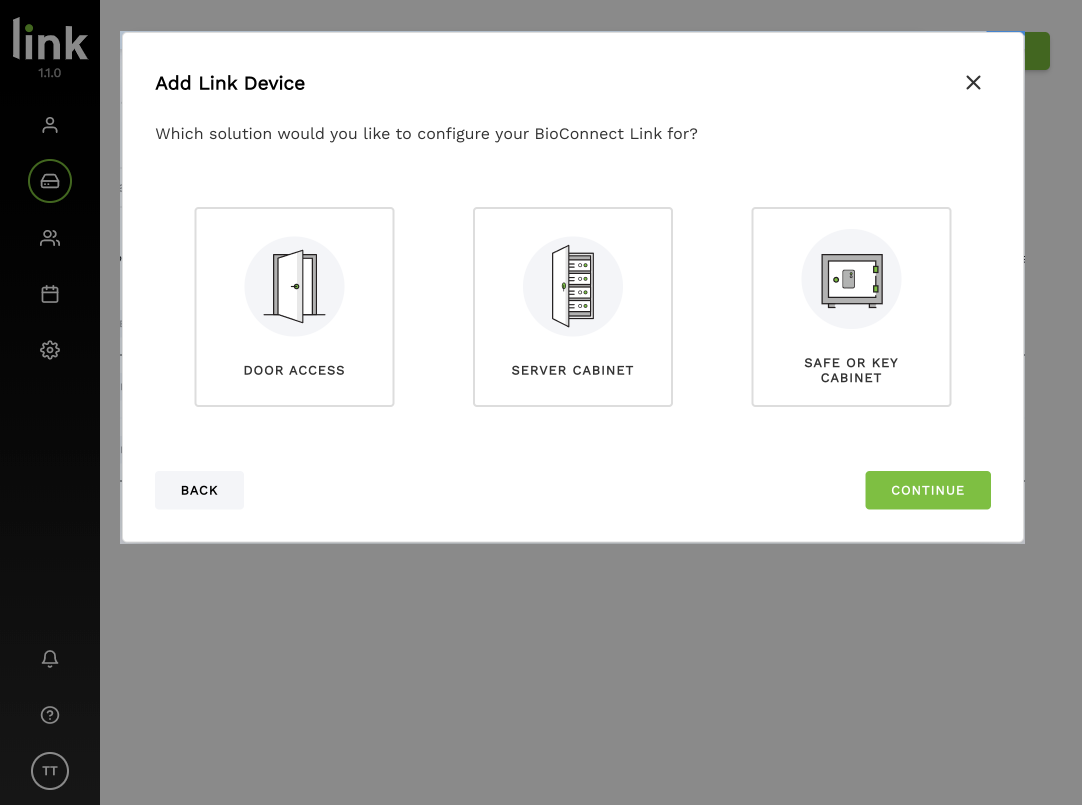
4. Ensure you have what you need at your installation site.
-
- Physical access to your cabinets (optional – only needed if you are using an access control panel)
- Ethernet with PoE to power the device or 12VDC power supply – we recommend an Ethernet Connection.
- Access to ethernet port with internet connectivity
- A Philips or flathead screwdriver
Please contact support if you require additional help.
Inside the Box
- Link Device
- KS200 Lock (x2)
- Link Wiring Harness (x2) (comes with KS200 lock)
Please contact support if you require additional help.
Wiring the Device
Overview
The Link Device will be connected to two KS200 locks located on the front and back cabinet doors.
The front lock will be connected to ‘Door 0‘ and ‘Door 2/Sensors Front‘ on the Link Device.
The back lock will be connected to ‘Door 1‘ and ‘Door 3/Sensors Rear’ on the Link Device.
After completing the following steps, your installation will look like this:

Wiring the Device

2. On the Link Wiring Harness, connect the following wires into ‘DOOR 1‘ on the Link device.
D0 IN: Green (Wiegand D0)
GND: Orange (Ground)
LED: Blue/White (Red LED)

LED: Blue (Green LED)
D1/Handle: Brown/White (Handle Sensor)


5. On the Link Wiring Harness, connect the following wires into ‘DOOR 1‘ on the Link device.
D0 IN: Green (Wiegand D0)
GND: Orange (Ground)
LED: Blue/White (Red LED)

LED: Blue (Green LED)
D1/Handle: Brown/White (Handle Sensor)

Powering the Device
After completing the above connections, you will now power the device using either PoE (recommended) or 12VDC.
To learn how to power your device(s) with 12VDC, see Appendix B.
Power using PoE
1. Connect the POWER wires (Orange/White) from both the Rear and Front Link Wiring Harnesses into the POWER on the Link Device.
2. Connect the provided PoE Splitter to the Link Device:
- PoE Splitter Ethernet to the Link Device Ethernet Plug
- PoE Splitter GND Wire (black) to the Link Device GND
- PoE Splitter POWER Wire (red) to the Link Device POWER
3. Power the device by plugging your Ethernet Cable into the PoE Splitter.
Once completed, confirm all connections are secure.

Mounting the Device

Activating the Device
Overview
For this step, a laptop or smartphone, the Link device and an ethernet connection with internet access is required. The Link device will be activated by adding it to the BioConnect Link Console.
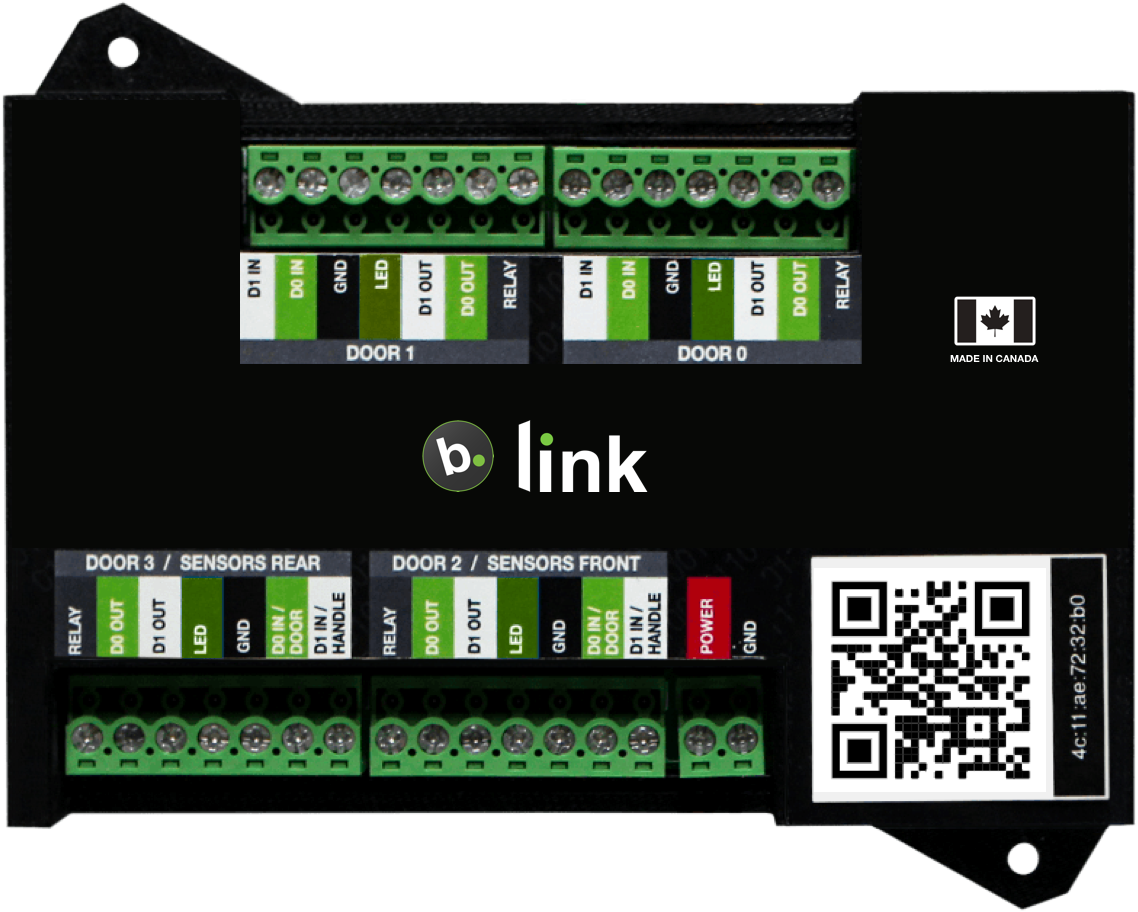
Adding a Link to Your Account
1. On a desktop or mobile device, open a browser and navigate to the BioConnect Link Console.
2. Enter login information.
Note: Adding more than one device? Learn how to scan a QR code in Appendix A.
6. Select whether you are setting up your device for (1) a normal Physical Door (2) a Server Cabinet or (3) a Safe or Key Cabinet.
- Door Access allows you to use your Link to enable 2FA on a regular door by enabling stepup with your digital Multi Factor Authentication. The Link device is before an Access Control Panel and the Access Control Panel is still controlling the final door lock.
- Server cabinet access allows you to use Link to enable 2FA on a cabinet and track cabinet door open or close status, as well as firing the relay. The Cabinet solution can work independent of an ACM panel.
- Be descriptive, ex. Main Entrance.
8. Once your device is added, you can now enable the device for mobile authentication (optional).
Software Setup
Overview
Setting up the software will include connecting a Two-Factor Authenticator to enable step-up notifications.
Configuring Authenticators
1. In your browser, navigate to the BioConnect Link Console and login using your credentials.
2. Navigate to the ‘Settings’ page.
4. If you choose to use the BioConnect Mobile Authenticator, you have the option of using either a ‘Simple Yes/No’ Authentication or Biometric Authentication.
Configuring a Schedule
4. Enter the start time and end time that you wish to enforce step-ups.
5. Select ‘Set Schedule’ to save your schedule.
Adding a User
Overview
To add users into the Link Console, you can either automatically sync them via the ACM Sync feature, or you can manually add users. To add users manually, skip to ‘Adding Users Manually’ below.
Adding Users using ACM Sync (Optional)
The ACM Sync will automatically and securely pull users details, encrypted card details, and 3rd party IDs (second-factor authentication credentials).
Card details and 3rd party IDs are required to enable two-factor authentication within Link.
Requirements
Before you begin, ensure you have all of the following available:
- Link Account Login Credentials
- ACM Server Credentials
- Knowledge of your ACM, such as where your ACM stores 3rd party IDs (eg. Active Directory credentials).
To use ACM Sync, Contact Us for the Install File.
Installing the ACM Sync
1. Run the ACM Sync installer and follow the on screen prompts.
Important: Ensure to install on a network that can access your ACM server.
2. Review the terms and conditions and choose a download location.
3. Enter credentials and then test the connection to the Link Cloud by selecting ‘Test API‘.
4. Choose the account under which the ACM Sync service will run.
5. Select your ACM and provide credentials to connect to your ACM.
6. Select where the 3rd Party ID is stored and click ‘Install‘.
7. Once the installation is complete, the ACM Sync will begin to automatically sync users every 5 minutes. To ensure the installation was successful, confirm that users have been added to the Link Console ‘User Management‘ page.
Note: A first time sync may take more time depending on the size of your database.
If you choose to not use the ACM Sync, you can manually add users to the Link Console.
User Management
How to Enable Step Up for Users
Adding a Card to an Existing User
If you did not add cards to your users when initially adding them to the system, you can add them to your existing users at a later time
2. Navigate to the BioConnect Console ‘Users’ page and select the user
3. Select ‘Manage’ and then select ‘Add Card’
- Review the time stamp of the transaction to ensure it matches with the card was scanned. The most recent transactions appear at the top.
- Review the door details – if you know the door that the card was tapped at, you can verify it in those columns.
Verifying Step Up is Enabled
Once your device has been installed, software configured, and your users and cards have been added, you can test to ensure your step up is working.
2. Press the ‘Manage’ button and select ‘Send Test Request‘ from the drop down list.
3. If the test user receives their step-up notification to their device, step-up has been successfully enabled.
Group Management
How to Create a User Group
Forgot Password
How to reset your password
If you’ve forgotten your password, you can access your account by resetting it.
1. On the Link Console login screen, select ‘Forgot Password‘.


Appendix
Appendix A
If you are adding more than one device, it may be faster to add them via QR code.
1. Using a smartphone, scan the QR code located on the device using your phone camera and tap on the link that appears.
- You can do this by opening your smartphone’s camera and hovering over the QR code until a notification appears.
- Click on this prompt to open a web browser where you will be asked to enter: Subdomain, Username and Password.

3. The MAC address will populate, tap ‘Continue’.


Appendix B
If you do not wish to power your device(s) with PoE, you can use 12VDC .
Power using 12VDC
- Connect the Orange/White (12VDC) wires from both the Front AND Rear locks into ‘POWER‘ on the Link device.
- Connect an external 12VDC supply (not provided) to the Link Device power connectors (along with the Orange/White wires).
- For internet connection, you must also plug the ethernet cord into the Link device ethernet port



